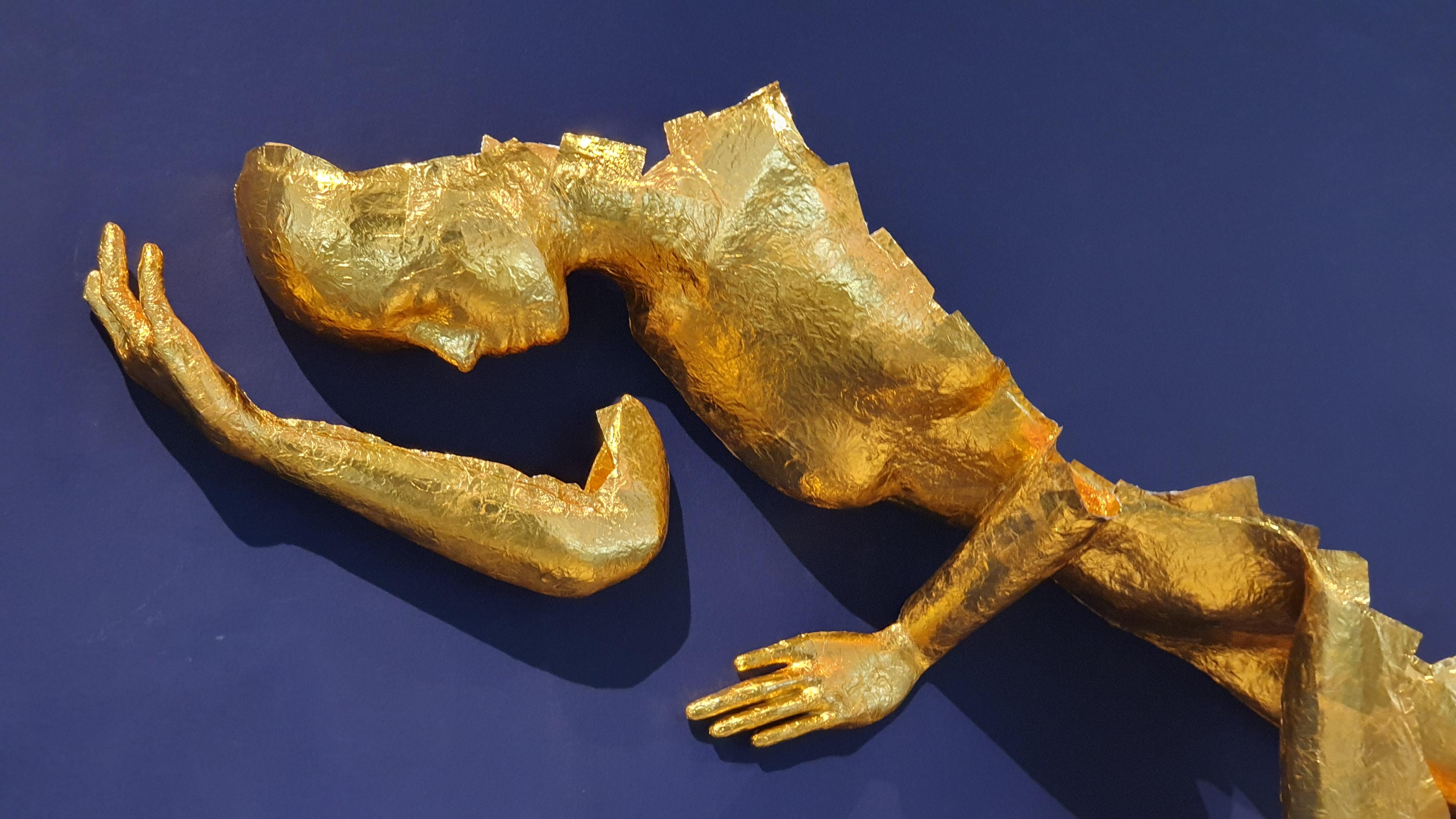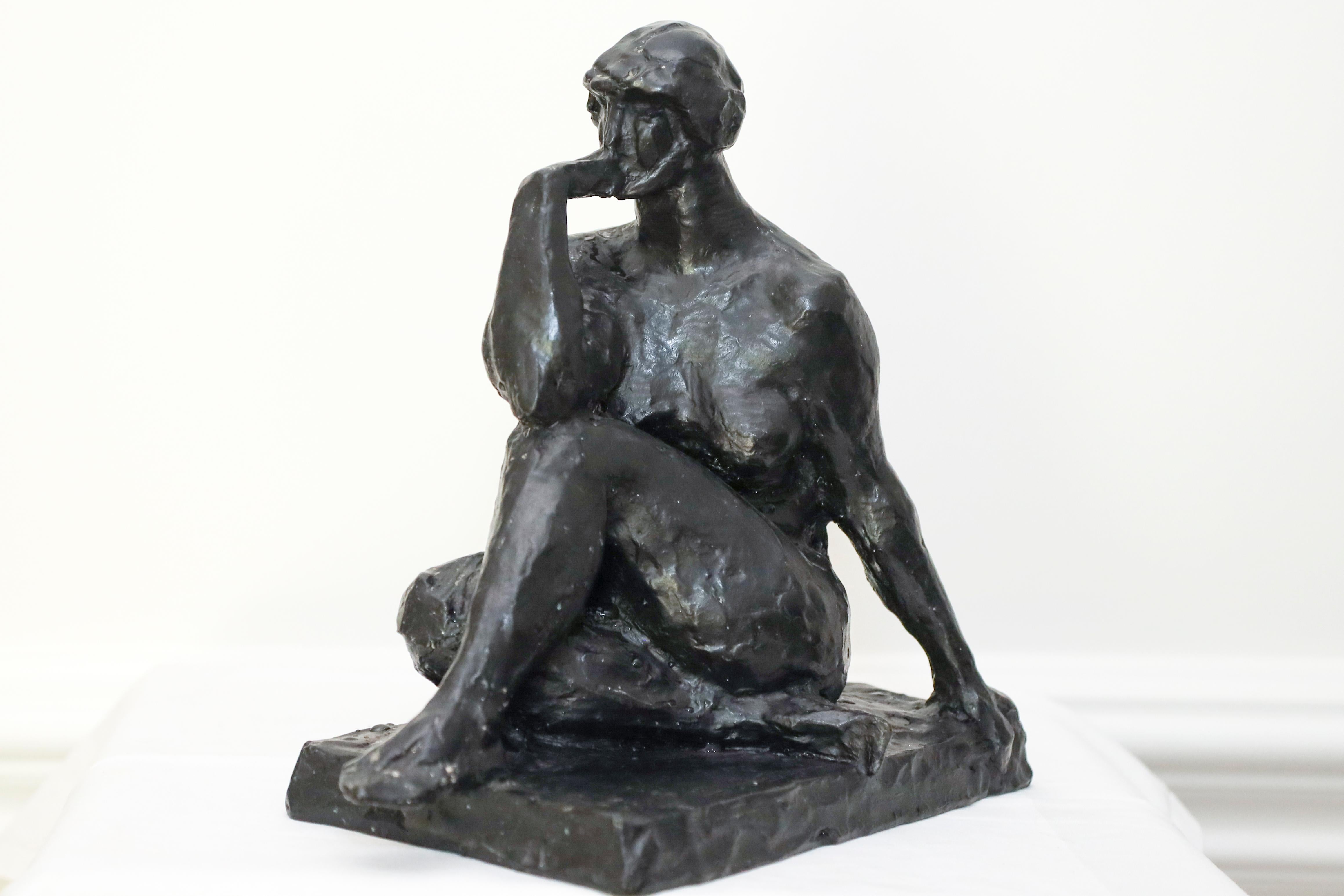Items Similar to Dance of Life
Video Loading
Want more images or videos?
Request additional images or videos from the seller
1 of 13
Frederick HartDance of Life1997
1997
About the Item
Frederick Hart (American, 1943-1999)
Dance of Life, 1997
Edition: 195/350 along base
Signed, dated along base
23.25 x 8.75 x 8.25 inches
Frederick Hart was a prominent late 20th century figurative sculptor. His view was that, "Art must touch our lives, our fears and cares; evoke our dreams and give hope to the darkness." He took the notion stated by playwright Tom Stoppard, who said "Modern art is innovation, without skill," and rejected this nihilism when developing the techniques that would earn him the title the "Rodin of our Century."
Beginning his life in Atlanta, and his career in Washington D.C., Hart was the epitome of the starving artist. He saw that he was spiritually descended by famed figurative masters such as August St. Gaudens and Daniel Chester French, but he failed to realize the fame these artists enjoyed. At Dupont Circle he could be found sculpting girlfriends, kids and buddies but not truly finding his calling. He became despondent with the lack of skill on the "modern" art scene, and more the notion that society had forgotten what it meant for something to be beautiful, timeless and everlasting.
Hart then discovered the Washington National Cathedral, the seventh largest cathedral in the world, and the only place in the world he could truly surround himself with the Italian master stone carvers that would make him the master. He carried tools, fetched coffee and finally ingratiated himself into the cadre of stone carvers, whose impermeable ranks were so hard to breach. The head master himself, Roger Morigi, a temperamental Italian, with a penchant for the "tough-love" way of teaching, took him as an apprentice.
In 1971, Hart found out about the competition for the commission of the sculpture to adorn the west facade of the cathedral with a sculpture based on creation. Hart inspired by the writings of Pierre Teilhard de Chardin a French Jesuit theologian and philosopher who said that mankind is in a constant state of becoming conscious of itself. With this thought in mind he spent two and one-half years creating what became one of the most prominent religious sculpture of our day. Ex Nihilo (Out of Nothing), an eight figure larger than life swirling mass, which notoriously gained recent recognition as the subject of the lawsuit against the makers of the movie The Devil's Advocate, which Hart won. The sculpture was thirteen years in stone carving, and finally dedicated in 1982.
Hart created the six major sculptures on the West facade, giving him a similar historical place among masters such as Bernini, Michaelangelo and Rodin. Hart said, upon it's completion "my life's work is complete, my destiny fulfilled." Once complete Hart looked through the art journals and literary magazines for some mention of this masterwork, none came. Hart hoped he would find an article panning it, just to let him know that someone was watching figurative work. No one was.
Hart decided his sculpture was ignored because it was in the tradition of the old school, and therefore offered no new ideas. During this cycle, Hart heard about a commission to be awarded for the dedication of a new "Vietnam Veterans Memorial" to be placed on the Mall in front of the Washington Monument. The requisite element was that all 58,000 dead must be named. Hart entered a sculpture containing both a wall with the listed dead, as well as a medic running toward a wounded soldier. The board voting on the monument awarded the commission to a 21-year-old Yale University architecture student, Maya Ying Lin. Lin's design was a minimalist black granite wall, shiny, deeply cut into the Earth. This set off a series of debates that occupied the United States with bitter debate. The problem that veterans (and Hart) had with it was that it lacked a human face. How would such a wall translate to a society one hundred years from now? Once we are dead and gone, would it still have any impact, like the sculptures of civil war heroes? Vets called it the "great black gash of shame and sorrow." Hart simply called it "a telephone book listing of dead people".
Funding for the project was withheld until a suitable solution could be reached. The idea was proposed that a figurative element be placed near the monument, at its apex. Hart was given the commission, and altered the plan. Instead of placing his Three Servicemen at the apex, place them approximately 400 feet from the wall; looking, as one Vet said "for their own names." This satisfied both sides and quelled the debate.
In an interview, Hart mentioned that the monument is one of the hardest places for him to visit, because after absorbing all of the interviews with GI's, and the controversy surrounding the monument itself, he had to synthesize it into what it became, in his words "the most effective ensemble monument in the United States."
In the early 70's, after sculpting in stone (the stone age) and bronze (the bronze age), Hart turned his attention to light. He believed we were entering an age of enlightenment, "The age of Light". So he began developing the uses of clear acrylic resin, to "Sculpt in light". Harking back to the teachings of Chardin, and his vision of creation, Hart created a new legacy with his development of acrylic as a figurative media. The Children of Ex Nihilo were born. After releasing his first sculpture in the "Age of Light" collection, in 1984, Hart's vision became clearer and he began to realize the artistic and commercial success of his work.
Subsequent works, such as Memoir and Dance of Life experimented with imbedding one acrylic sculpture within another, which Hart then patented. The mystery of this technique still confounds viewers and technicians to this day. Through commercial success and public monuments, works for Pope John Paul II such as Cross of the Millennium, Hart still surprisingly enjoyed little critical acclaim.
On August 13, 1999 at the age of 55, Hart died of lung cancer that was diagnosed only two days before.
- Creator:Frederick Hart (1943 - 1999, American)
- Creation Year:1997
- Dimensions:Height: 23.25 in (59.06 cm)Width: 8.75 in (22.23 cm)Depth: 8.25 in (20.96 cm)
- Medium:
- Movement & Style:
- Period:
- Condition:
- Gallery Location:Missouri, MO
- Reference Number:1stDibs: LU747314276522
About the Seller
5.0
Vetted Seller
These experienced sellers undergo a comprehensive evaluation by our team of in-house experts.
Established in 1970
1stDibs seller since 2017
141 sales on 1stDibs
Typical response time: 21 hours
- ShippingRetrieving quote...Ships From: Missouri, MO
- Return PolicyA return for this item may be initiated within 2 days of delivery.
More From This SellerView All
- Falling Man, 1990By Ernest Tino TrovaLocated in Missouri, MOFalling Man, 1990 By. Ernest Trova (1927-2009) 6.5" x 2" x 2" Ed. 50/99 Numbered/Dated on Bottom *This figure has multiple moving sections Known for his...Category
20th Century Abstract Figurative Sculptures
MaterialsStainless Steel
- Black Falling Man with FormBy Ernest Tino TrovaLocated in Missouri, MOErnest Tino Trova "Black Falling Man with Form" 1996 Bronze Ed. 1/3 Signed, Dated and Numbered Verso approx. 16 x 8.5 x 16 inches Known for his Falling Man series in abstract figura...Category
1990s American Modern Figurative Sculptures
MaterialsBronze
- Fischer mit Netzen (Fisherman with Nets)Located in Missouri, MO*The large version of this work is in the Falkenseer Platz Plaza in Spandau, Berlin (scroll thru pictures above) The oeuvre of the Berlin artist Ursula Hanke-Förster (1924-2013) contains graphic works, a variety of sculptures and a range of objects in public space. Hanke-Förster started her career studying painting, drawing and sculpting at the Hochschule für Bildende Künste Berlin. Her teachers were among others Max Kaus und Gustav Seitz. She met artists such as Alberto Giacometti and Germaine Richier in Paris as well as Henry Moore and Kenneth Armitage...Category
Mid-20th Century Modern Figurative Sculptures
MaterialsBronze
- Car Man, Four WheelsBy Ernest Tino TrovaLocated in Missouri, MOErnest Tino Trova "Car Man, Four Wheels" 17 x 8 x 14.5 inches Inscribed T-06 Bottom Known for his Falling Man series in abstract figural sculpture, he created hard-edge images that ...Category
Late 20th Century American Modern Figurative Sculptures
MaterialsBronze
- Falling Man and FormBy Ernest Tino TrovaLocated in Missouri, MOErnest Tino Trova "Falling Man and Form" 1996 Brass and Bronze 14 x 4.5 x 4.5 inches Signed and Numbered 1/1 (Unique) Known for his Falling Man series in...Category
1990s American Modern Figurative Sculptures
MaterialsBrass, Bronze
- Seagull LampLocated in Missouri, MOWilliam F. Boogar, Jr. Seagull Lamp 1946 Bronze approx. 15 1/4" High x 6 1/2" Wide Signed and Dated Bottom WILLIAM F. BOOGAR, Jr., the Provincetown sculp...Category
1940s Modern Figurative Sculptures
MaterialsBronze
You May Also Like
- Dana Bloom, Measurement, Currently presented at the Tel Aviv BiennaleLocated in Tel Aviv, ILDana Bloom's Measurement features a gilded human figure that challenges the viewers' perception of presence and absence, while exuding a dreamlike, timeless...Category
2010s Contemporary Figurative Sculptures
MaterialsFoil, Gold Leaf
- Woman Seated A Bronze Sculpture of a Woman by Charles RumseyBy Charles Cary RumseyLocated in Brookville, NYThe bronze sculpture of a woman by Charles Rumsey is undated, but was created at a point in his career where he began to transition from realism to more modern, looser depictions of ...Category
1920s American Modern Figurative Sculptures
MaterialsBronze
- Three DancersLocated in Santa Fe, NM"A beautiful work, full of Hebald's lyrical expression." To my knowledge, as the representative for the life works of Milton Hebald, (and through extensive research over the past 20...Category
Mid-20th Century American Modern Figurative Sculptures
MaterialsBronze
- Monumental Marble Italian Rationalist Figurative Nude SculpturesLocated in Rome, ITThis monumental pair of sculptures in "Bardiglio" marble represent Greek Athlete of Discobolo and the Hercules figure with a lion pelt, on a cylindrical base...Category
1960s Modern Figurative Sculptures
MaterialsMarble
- Monumental Marble Italian Rationalist Figurative Nude SculpturesLocated in Rome, ITThis monumental pair of sculptures in "Bardiglio" marble represent Greek Athlete of Discobolo and the Hercules figure with a lion pelt, on a cylindrical base...Category
1960s Modern Figurative Sculptures
MaterialsMarble
- Monumental Italian Rationalist Marble Sculptures of Hercules and DiscoboloLocated in Rome, ITThis monumental pair of sculptures in "Bardiglio" marble represent Greek Athlete of Discobolo and the Hercules figure with a lion pelt, on a cylindrical base...Category
1960s Modern Figurative Sculptures
MaterialsMarble





